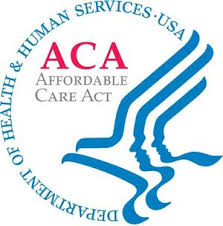 Our last blog provided some background on the READMISSIONS REDUCTION PROGRAM —a three-year rolling process of reporting all-cause readmissions within 30 days of discharge, along with potential penalties.1 Today, we’ll look at the third program established by the Affordable Care Act (ACA): the HOSPITAL-ACQUIRED CONDITIONS (HAC) REDUCTION PROGRAM.
Our last blog provided some background on the READMISSIONS REDUCTION PROGRAM —a three-year rolling process of reporting all-cause readmissions within 30 days of discharge, along with potential penalties.1 Today, we’ll look at the third program established by the Affordable Care Act (ACA): the HOSPITAL-ACQUIRED CONDITIONS (HAC) REDUCTION PROGRAM.
HAC REDUCTION PROGRAM allows the Centers for Medicare & Medicaid Services (CMS) to reduce payments by 1% to hospitals in the worst-performing quartile.2 The CMS reduces payments for specific safety issues and hospital-acquired infections3
- CAUTI | Catheter Associated Urinary Tract Infection
- CLABSI | Central Line Associated Bloodstream Infection
- SSI | Surgical Site Infection
- Abdominal hysterectomy
- Colon surgeries
- MRSA | Methicillin-Resistant Staphylococcus Aureus Bacteremia
- CDI | Clostridium Difficile Infection
HACs are acquired by patients while receiving care and represent the most frequent adverse event affecting patient safety worldwide.4 For FY 2017, CMS estimated that overall payments to 769 hospitals would drop by roughly $430 MILLION.5
There are two domains associated with the HAC REDUCTION PROGRAM.3:
DOMAIN 1 is based on Agency for Healthcare Research and Quality (AHRQ) Patient Safety Indicator (PSI) 90 Composite Component Measures and provides an overview of hospital-level quality as it relates to a set of potentially preventable hospital-related events associated with harmful outcomes for patients.6 It is weighted 15%.4
DOMAIN 2 includes standardized infection ratios (SIRs) calculated by the Centers for Disease Control and Prevention (CDC) National Healthcare Safety Network (NHSN) Healthcare-Associated Infection (HAI) Measures.4 It is weighted 85%.4
If you’ve been following our blog, you’ll probably remember that measures from Domain 2, which make up 85% of the weighting, are penalized in multiple programs—here, in the HAC Reduction Program as well as in the Value-Based Purchasing Program (VBP).
What’s the impact? Consider an average 300-bed Community Hospital with 48% of their patients being Medicare beneficiaries. If they have an inpatient Medicare revenue of $26,000,000 and received a $20,000 payment reduction for a condition/diagnosis, their 1% penalty reduction would be $200. That same reduction would be applied to EVERY inpatient Medicare claim submitted during the fiscal year and could result in a penalty of $260,000.
According to the CMS, there’s good news—improvements are being made. Across the last three fiscal years, 2015, 2016, and 2017, the average performance across eligible hospitals improved for the mean Catheter-Associated Urinary Tract Infection (CAUTI) standardized infection ratio (SIR) and the mean SIR decreased from 1.12 in FY 2015 and 1.17 in FY 2016 to 0.91 in FY 2017.7
If you’d like a comprehensive overview of the Affordable Care Act as featured in our last 4 blogs, click here to download the “True Transparency in the Cost of Care” infographic.
Come back next time when we review some of the latest clinical evidence on CAUTI risk reduction presented at the APIC Annual Conference 2017.
Minimizing infection risk is an essential part of optimizing “The Triple Aim” of the Affordable Care Act. Eloquest Healthcare is committed to providing solutions that can help you reduce risk of conditions like a CAUTI, CLABSI, or SSI.
References
-
Understanding the Hospital Readmissions Reduction Program. The Lake Superior Quality Innovation Network, Centers for Medicare & Medicaid Services Quality Improvement Organization Program. https://www.stratishealth.org/documents/Readmissions_Reduction_Fact_Sheet.pdf. Published November 2014. Accessed January 16, 2017.
-
Hospital-Acquired Condition Reduction Program (HACRP). Centers for Medicare & Medicaid Services. https://www.cms.gov/Medicare/Medicare-Fee-for-Service-Payment/AcuteInpatientPPS/HAC-Reduction-Program.html. Accessed January 16, 2017.
-
FY 2017 HACRP Key Dates Matrix. Hospital-Acquired Condition Reduction Program (HACRP). Centers for Medicare & Medicaid Services. https://www.cms.gov/Medicare/Medicare-Fee-for-Service-Payment/AcuteInpatientPPS/HAC-Reduction-Program.html. Accessed January 16, 2017.
-
Health care-associated infections fact sheet. World Health Organization. http://www.who.int/gpsc/country_work/gpsc_ccisc_fact_sheet_en.pdf. Accessed March 30, 2017.
-
Haefner M. 769 hospitals see medicare payments cut over high HAC rates: 7 things to know. http://www.beckershospitalreview.com/quality/769-hospitals-see-medicare-payments-cut-over-high-hac-rates-7-things-to-know.html. Published December 22, 2016. Accessed January 16, 2017
-
PSI 90 Fact Sheet. AHRQ Quality Indicators. Agency for Healthcare Research and Quality. https://www.qualityindicators.ahrq.gov/News/PSI90_Factsheet_FAQ.pdf. Published FY 2016. Accessed March 30, 2017.
-
FY 2017 HACRP Fact Sheet. Hospital-Acquired Condition Reduction Program (HACRP). Centers for Medicare & Medicaid Services. https://www.cms.gov/medicare/medicare-fee-for-service-payment/acuteinpatientpps/HAC-reduction-program.html. Accessed March 30, 2017.










